Morocco is a captivating country with diverse landscapes, rich history, and vibrant culture. This Morocco travel guide will provide you with essential information to make the most of your trip, from exploring the bustling medinas of Marrakech to experiencing the vast beauty of the Sahara Desert.
Discover the enchanting cities of Fes and Chefchaouen, immerse yourself in the coastal charm of Essaouira, and trek through the picturesque Atlas Mountains. Indulge in the flavors of traditional Moroccan cuisine, visit ancient ruins and historical sites, and navigate the labyrinthine streets of the country’s vibrant markets.
With its blend of ancient traditions and modern allure, Morocco offers an unforgettable travel experience. So grab your camera, pack your bags, and get ready to explore this magnificent North African gem.
Planning Your Trip To Morocco
Discover the vibrant culture and enchanting landscapes of Morocco with our comprehensive travel guide. From exploring bustling markets to visiting ancient cities, plan your perfect trip to Morocco and embark on a memorable adventure.
Best Time To Visit Morocco
Choosing the best time to visit Morocco is essential for a memorable and enjoyable trip. The country experiences a diverse climate, with distinct variations between its regions. To make the most of your visit, consider the following:
- Spring (March to May): Spring is arguably the best time to visit Morocco, with mild temperatures and beautiful landscapes. It is the perfect season to explore popular destinations like Marrakech, Fez, and the Atlas Mountains.
- Summer (June to August): While the summer months can be scorching hot, coastal areas such as Essaouira and Agadir offer a respite with refreshing sea breezes. If you’re planning to visit the Sahara Desert, keep in mind that temperatures can reach extreme highs.
- Fall (September to November): Fall is another excellent time to visit Morocco, with warm temperatures that are more pleasant than the summer heat. The vibrant city of Chefchaouen, known for its blue-painted streets, is particularly enchanting during this season.
- Winter (December to February): The winter in Morocco can be chilly, especially in the Atlas Mountains. However, if you enjoy winter sports or want to experience the unique beauty of snow-capped landscapes, this is the perfect time to visit.
Visa Requirements For Traveling To Morocco
As an international traveler planning a visit to Morocco, it is important to familiarize yourself with the visa requirements. Here are the essentials:
- No Visa Requirement for Many Countries: Morocco allows visa-free travel for citizens of numerous countries, including the United States, Canada, the United Kingdom, Australia, and most European nations. Visitors from these countries can usually stay for up to 90 days without a visa. However, it’s always best to check the specific requirements based on your nationality.
- Passport Validity: Ensure your passport is valid for at least six months beyond your planned departure date from Morocco. This is a general requirement and may vary for different countries, so double-check before traveling.
- Visa Extensions: If you plan to stay in Morocco for a longer period and exceed the visa-free limit, you can typically apply for a visa extension at local police stations or the Moroccan Ministry of Foreign Affairs.
Packing Tips For Visiting Morocco
Knowing what to pack for your trip to Morocco can greatly enhance your overall experience. Consider the following packing tips:
- Modest Clothing: Morocco is a predominantly Muslim country, and it is respectful to dress modestly, especially when visiting religious sites. Pack breathable, lightweight clothing that covers your shoulders and knees.
- Appropriate Footwear: With the vibrant markets (souks) and uneven terrain in some areas, comfortable walking shoes are a must. Bring a pair that is suitable for urban exploration as well as any outdoor adventures you may have planned.
- Layered Clothing: Morocco’s climate can vary throughout the day, so pack layers that allow you to adjust accordingly. This ensures you are prepared for temperature fluctuations during your travels.
- Travel Essentials: Don’t forget to pack essentials such as sunscreen, a hat, sunglasses, and a refillable water bottle to stay hydrated. Additionally, carry a universal power adapter since Morocco uses the European plug type.
- Local Currency: It’s advisable to bring some Moroccan Dirhams (MAD) before arriving in the country. While credit cards are widely accepted in tourist areas, having some local currency can be convenient, especially in smaller towns and markets.

Exploring The Must-visit Cities In Morocco
When it comes to exploring Morocco, there are some cities that simply cannot be missed. From the vibrant cultural hub of Marrakech to the captivating blue streets of Chefchaouen, each city offers its own unique charm and experiences. In this Morocco travel guide, we will take you on a journey through the must-visit cities of this enchanting country.
Marrakech: A Vibrant Cultural Hub
Marrakech is a destination that fuels the senses with its vibrant colors, bustling markets, and rich history. Known as the “Red City” for its terracotta-colored buildings, Marrakech offers a plethora of attractions that will captivate any traveler. The labyrinthine streets of the Medina lead to the famous Djemaa el-Fna square, where snake charmers, street performers, and food stalls create a lively atmosphere that has remained unchanged for centuries. Visitors can also explore the stunning Bahia Palace, the serene Majorelle Garden, and the majestic Koutoubia Mosque.
Chefchaouen: The Blue Pearl Of Morocco
Tucked away in the Rif Mountains, the picturesque town of Chefchaouen is known for its enchanting blue streets and buildings. This idyllic setting offers a serene escape from the hustle and bustle of city life. Strolling through the narrow alleyways adorned with vibrant blue paint, visitors will feel like they have stepped into a fairytale. The town’s charming cafes, local handicrafts, and stunning mountain views make Chefchaouen an ideal destination for relaxation and exploration. Don’t miss the opportunity to hike to the nearby Cascades d’Akchour and marvel at the breathtaking waterfalls.
Fes: A Unesco World Heritage Site
Fes, the cultural and spiritual capital of Morocco, is a city steeped in history and tradition. Its sprawling medina, Fes el-Bali, is a UNESCO World Heritage Site and one of the largest car-free urban areas in the world. Here, visitors can wander through the labyrinthine streets, uncovering hidden gems at every turn. The city is renowned for its ancient tanneries, where leather is still dyed using traditional methods. A visit to the Bou Inania Madrasa and Al-Attarine Madrasa is a must to admire the exquisite Moroccan architecture and intricate tilework. Fes also offers a vibrant street food scene, where visitors can indulge in local delicacies such as the famous Fassi pastilla or flavorful harira soup.
Casablanca: The Modern Metropolis
Casablanca, Morocco’s largest city, is a cosmopolitan metropolis that combines a rich history with modernity. The city is famous for its iconic Hassan II Mosque, one of the largest mosques in the world and a true architectural masterpiece. The charming old medina, with its winding streets and bustling markets, offers a glimpse into the city’s past. For a taste of contemporary Casablanca, head to the vibrant Corniche where trendy beach clubs, upscale restaurants, and luxury boutiques line the coast. Casablanca is also a hub for art and culture, with its thriving art galleries and annual Casablanca Festival attracting artists from around the world.
Experiencing The Diversity Of Moroccan Cuisine
Morocco is a land of vibrant colors, aromatic spices, and a diverse culinary heritage that will tantalize your taste buds. The rich blend of Berber, Arabic, and French influences in Moroccan cuisine makes it a true melting pot of flavors. From savory tagines to refreshing mint tea, there is something to please every palate. So, get ready to embark on a gastronomic adventure as we explore the diversity of Moroccan cuisine.
Traditional Moroccan Dishes To Try
When it comes to traditional Moroccan dishes, you are in for a treat. Moroccan cuisine is known for its robust flavors and unique blend of spices. Here are some must-try dishes:
- Tajine: A slow-cooked stew made with a variety of ingredients such as chicken, lamb, or vegetables. The combination of tender meat and aromatic spices will leave you craving for more.
- Couscous: This staple dish is made from semolina grains and often served with vegetables, meat, or fish. The fluffy texture and flavorful broth make it a satisfying meal.
- Pastilla: A sweet and savory pie made with layers of flaky pastry filled with pigeon meat, almonds, and a blend of spices. It’s a true delicacy that showcases Morocco’s culinary creativity.
- Harira: A hearty soup made with tomatoes, lentils, chickpeas, and aromatic spices. It is traditionally enjoyed during Ramadan and is a symbol of Moroccan hospitality.
Popular Street Food In Morocco
If you want to experience the vibrant street food culture of Morocco, make sure to try these popular delicacies:
- Msammen: A flaky and buttery Moroccan pancake that is often stuffed with cheese, honey, or a combination of both. It’s perfect for a quick and delicious bite on the go.
- Zaalouk: A flavorful eggplant and tomato dip with hints of cumin and garlic. It is usually served with crusty bread and is a must-try for any vegetarian.
- Merguez: These spicy lamb sausages are a favorite among meat lovers. Grilled to perfection and served with bread or in a sandwich, they are a delicious and filling street food option.
- Chermoula Fish: Fresh fish fillets marinated in a zesty blend of herbs and spices, then grilled to perfection. It’s a popular street food choice along the coastal regions of Morocco.
Moroccan Tea And Desserts
No Moroccan meal is complete without indulging in their world-famous mint tea and delectable desserts. Here are some highlights:
- Moroccan Mint Tea: This sweet and refreshing tea is a Moroccan specialty. Made with fresh mint leaves and gunpowder green tea, it is poured from great heights to create a frothy texture. Sipping on a cup of Moroccan mint tea is a delightful experience.
- Baklava: A rich and sweet pastry made with layers of filo pastry, nuts, and honey. The combination of crunchy and sticky textures will leave you wanting more.
- Seffa: A sweet and fragrant couscous dessert often served on special occasions. It is topped with raisins, almonds, and a dusting of powdered sugar, creating a visually stunning treat.
- Chebakia: Also known as “Moroccan pretzels,” these deep-fried sesame cookies are dipped in honey syrup and sprinkled with sesame seeds. They are a popular indulgence during festivals and celebrations.
Discovering The Natural Wonders Of Morocco
When it comes to natural beauty, Morocco is a treasure trove waiting to be discovered. From vast deserts to towering mountains and stunning coastlines, this North African country offers an unparalleled experience for adventure enthusiasts and nature lovers alike. Let’s delve into the natural wonders that make Morocco a destination like no other.
The Sahara Desert: A Majestic Landscape
The Sahara Desert, the largest hot desert in the world, is an awe-inspiring sight that must be seen to be believed. Stretching across a staggering 3.6 million square miles, the vast expanse of golden sand dunes beckons travelers to immerse themselves in its grandeur. Picture yourself riding a camel across the undulating dunes, with the sun casting mesmerizing hues upon the landscape. It’s a truly magical experience that will leave an indelible impression. Whether you choose to spend a night under the sparkling blanket of stars or explore the ancient oases that dot the desert, a visit to the Sahara is an essential part of your Moroccan adventure.
Atlas Mountains: Hiking And Trekking Routes
Rising majestically across Morocco, the Atlas Mountains offer breathtaking vistas and endless possibilities for hikers and trekkers. With its jagged peaks and deep valleys, this mountain range presents a magnificent backdrop for outdoor enthusiasts seeking to challenge themselves. Embark on an unforgettable trek through the High Atlas, where you’ll encounter charming Berber villages nestled amidst terraced fields and cascading waterfalls. For mountaineers, the snow-capped peaks of Mount Toubkal, the highest mountain in North Africa, present an exhilarating ascent. Whether you’re a seasoned adventurer or a nature lover looking for a peaceful hike, the Atlas Mountains offer a range of trails suited to all abilities and interests.
Coastal Beauty: The Beaches Of Morocco
With a coastline that stretches over 1,800 miles, it’s no surprise that Morocco boasts some of the most picturesque beaches in the world. From the vibrant energy of Essaouira to the tranquil shores of Legzira, these pristine coastal havens offer a haven for relaxation and serenity. The beach towns of Agadir and Taghazout are legendary among surfers, with world-class breaks and a laid-back atmosphere that attracts wave riders from around the globe. Whether you prefer to bask in the sun, indulge in water sports, or simply stroll along the sandy shores, the beaches of Morocco promise an unforgettable coastal getaway.
So, whether you yearn for the tranquility of the desert, the thrill of conquering mountains, or the serenity of the beach, Morocco’s natural wonders have something for every nature lover. Embark on a journey that will leave you awe-inspired and with unforgettable memories of the stunning beauty that this captivating country has to offer.
Immersing Yourself In Moroccan Culture
Morocco is a country rich in history, traditions, and a vibrant cultural heritage. As you step into this enchanting North African paradise, you will find yourself drawn into a world of captivating art, mesmerizing music and dance, and unforgettable festivals and celebrations. Immersing yourself in Moroccan culture is not just an experience, but a journey of discovery into the heart and soul of a nation. Let’s explore some of the key elements that make Morocco a cultural treasure trove.
Moroccan Art And Architecture
One of the most striking aspects of Moroccan culture is its art and architecture, which is a reflection of the country’s diverse influences and rich heritage. From the intricate designs of Moroccan carpets to the breathtaking intricacies of its mosques and palaces, every piece of art and architectural marvel tells a story.
The fusion of Islamic, Arab, Berber, and European styles can be seen in the famous Moroccan cities like Marrakech, Fes, and Casablanca. The vibrant colors, geometric patterns, and exquisite craftsmanship of the traditional zellige mosaic tiles are a feast for the eyes. Exploring the medinas (old towns) filled with winding alleys, bustling souks (markets), and hidden courtyards is like stepping into a living museum of Moroccan art and architecture.
Traditional Music And Dance In Morocco
The rhythm of Moroccan culture beats to the sound of traditional music and dance. Moroccan music is a beautiful blend of Arabic, Berber, and Andalusian influences, creating a unique and soul-stirring experience. The haunting melodies of the oud (lute) and the rhythmic beats of the darbuka (drum) transport you to another world.
When it comes to dance, Morocco boasts a diverse range of traditional styles. From the energetic and vibrant movements of the Raïssas (female folk singers) to the mesmerizing twists and turns of belly dancing, each dance form has its own story to tell. The Gnawa music and dance, originating from sub-Saharan Africa, is a powerful and spiritual experience that captivates both locals and visitors alike.
Traditional Festivals And Celebrations
Moroccans know how to celebrate, and their festivals and celebrations are a testament to their vibrant culture and warm hospitality. Throughout the year, the country comes alive with colorful parades, music, dance, and feasts that showcase the heartwarming spirit of Moroccan traditions.
Here are some of the important traditional festivals and celebrations in Morocco:
- Eid al-Fitr: This religious festival marks the end of Ramadan and is celebrated with family gatherings, feasting, and giving alms to the poor.
- Imilchil Marriage Festival: This unique festival brings together young people from different tribes to find their soulmates. It is a celebration of love, unity, and cultural diversity.
- Tan-Tan Moussem: Held in the southern city of Tan-Tan, this annual festival is a lively gathering of nomads, musicians, dancers, and traders. It is a vibrant showcase of traditional art, music, and cultural heritage.
These festivals and celebrations provide a glimpse into the deep-rooted traditions and customs of Morocco, allowing you to connect with the locals on a personal and cultural level.
Uncovering The Rich History Of Morocco
Morocco, a mesmerizing country in North Africa, is a land that takes you on a captivating journey through time. With a history that spans thousands of years, Morocco offers a treasure trove of historical wonders, from ancient Roman ruins to vibrant Berber culture. In this article, we will delve into the intriguing historical landmarks of Morocco, explore the ancient Roman ruins that still stand today, and gain insight into the fascinating Moroccan Berber culture.
Historical Landmarks Of Morocco
Morocco is a tapestry of historical landmarks that tell stories of conquests, trade routes, and vibrant civilizations that once thrived within its borders. From magnificent palaces to fortified towns, Morocco is a paradise for history enthusiasts. Here are some noteworthy historical landmarks you shouldn’t miss during your visit:
- The Koutoubia Mosque in Marrakech, with its towering minaret, is a symbol of Morocco’s religious devotion and architectural brilliance.
- The Hassan II Mosque in Casablanca is a modern masterpiece, showcasing the intricate craftsmanship of Moroccan artisans.
- The Medina of Fez, a UNESCO World Heritage site, is a labyrinth of narrow streets, bustling markets, and architectural marvels that transport you back in time.
- The Mausoleum of Mohammed V in Rabat honors Morocco’s past kings and serves as a testament to the country’s regal history.
- The Ait Ben Haddou fortress, located on the edge of the Atlas Mountains, is a stunning example of Moroccan earthen architecture and a backdrop for many famous movies.
Exploring The Ancient Roman Ruins
Venturing into Morocco’s ancient past, you’ll discover the remnants of the Roman Empire still standing strong. The Romans, known for their engineering prowess, left a remarkable legacy across Morocco. Here are some must-visit ancient Roman ruins:
- Volubilis, a UNESCO World Heritage site, boasts the best-preserved Roman ruins in Morocco. Walk through the ancient streets, marvel at the well-preserved mosaics, and immerse yourself in the grandeur of the Roman Empire.
- Leptis Magna, located near the breathtaking coastal city of Rabat, allows you to explore an entire Roman city. Wander through the ruins of temples, markets, and theaters, transporting yourself back to the heyday of ancient Rome.
Insight Into Moroccan Berber Culture
Deeply rooted in Morocco’s history is the rich and vibrant culture of the Berber people. The Berbers, indigenous North Africans, have retained their ancient traditions and have left an indelible mark on Moroccan heritage. Here’s a glimpse into the fascinating Moroccan Berber culture:
- Riding through the Atlas Mountains: Embark on a journey through the majestic Atlas Mountains and witness the traditional Berber villages nestled amidst awe-inspiring landscapes.
- Exploring the souks: Moroccan markets, known as souks, offer an immersive experience into the Berber way of life. Interact with locals, savor traditional cuisine, and shop for exquisite handicrafts.
- Attending a traditional Berber festival: Immerse yourself in the vibrant colors, energetic music, and mesmerizing dances of a traditional Berber festival. Experience the warm hospitality and cultural pride of the Berber people.
Uncovering the rich history of Morocco is a journey that will leave you awe-inspired and deeply connected to the legacy of this remarkable country. From ancient Roman ruins to the captivating Berber culture, Morocco offers an enchanting blend of past and present.
Enjoying Adventure And Outdoor Activities
If you are a thrill-seeker and nature lover, Morocco is the perfect destination for you. With its diverse landscapes, ranging from majestic mountains to endless deserts and stunning coastline, this North African country offers a wide array of adventure and outdoor activities. Whether you are up for camel trekking in the desert, surfing the Atlantic waves, or trekking through national parks to spot unique wildlife, Morocco has something to offer to every adventure enthusiast.
Camel Trekking In The Desert
One of the most iconic experiences you can have in Morocco is camel trekking in the desert. Imagine yourself riding on the back of a gentle camel, as you traverse the vast golden sands of the Sahara. This ancient mode of transportation allows you to immerse yourself in the beauty of the desert landscape and connect with the Berber nomadic culture that has thrived in this region for centuries. Whether you choose a day trip or a multi-day excursion, camel trekking is an unforgettable adventure that will leave you with lifelong memories.
Surfing And Water Sports In Morocco
With its long stretches of sandy beaches and world-class waves, Morocco is a paradise for surfers and water sports enthusiasts. The coastal towns of Taghazout and Essaouira are particularly popular among surfers, offering consistent swells and excellent conditions for both beginners and experienced surfers. You can also try your hand at other water sports such as windsurfing, kitesurfing, and paddleboarding. The vibrant surf culture, warm waters, and breathtaking coastal scenery make Morocco an ideal destination for those seeking adrenaline-pumping water adventures.
Trekking And Wildlife Spotting In National Parks
If you prefer exploring the mountains and immersing yourself in nature, Morocco’s national parks are a must-visit. The High Atlas Mountains, with its towering peaks and picturesque valleys, offer endless opportunities for trekking and hiking. The Toubkal National Park is a popular choice for adventurers, with Mount Toubkal, the highest peak in North Africa, as its centerpiece. Here, you can challenge yourself to summit the mountain or explore the surrounding trails at your own pace. Additionally, Morocco is home to several national parks where you can spot unique wildlife, including the endangered Barbary macaques in the Ifrane National Park and the diverse bird species in the Souss-Massa National Park.
Whether you choose to embark on a camel trek through the desert, ride the waves on a surfboard, or hike the majestic mountains, Morocco offers endless opportunities for adventure and outdoor activities. So, pack your bags, unleash your adventurous spirit, and get ready to create unforgettable experiences in this captivating country.
Frequently Asked Questions On Morocco Travel Guide
Is It Safe To Travel To Morocco Right Now?
Yes, it is safe to travel to Morocco at the moment.
How Many Days In Morocco Is Enough?
A minimum of 7-10 days in Morocco is recommended to experience the country’s diverse landscapes, vibrant culture, and historic cities. This timeframe allows you to explore popular destinations like Marrakech, Fes, and the Sahara Desert, as well as take part in activities such as visiting Atlas Mountains, trying traditional cuisine, and shopping in local markets.
What Is The Best Month To Travel To Morocco?
The best month to travel to Morocco varies depending on your preferences. However, April to May and September to October offer pleasant weather and fewer tourists, making them ideal for exploring the country’s vibrant cities and stunning landscapes.
How Much Money Do I Need In Morocco For 10 Days?
For a 10-day trip in Morocco, it is recommended to budget around $500 to $800. This would cover accommodation, transportation, meals, and some attractions. However, the exact amount can vary depending on your preferences and travel style.
Conclusion
To conclude, Morocco offers an enchanting blend of vibrant traditions, breathtaking landscapes, and captivating history. Exploring the bustling streets of Marrakech, camel trekking through the Sahara, or discovering the intricate architecture of the majestic mosques, this country promises endless adventures.
Beyond the well-known attractions, Morocco’s warm hospitality and rich culture leave a lasting impression on every traveler. So pack your bags, immerse yourself in the magic of Morocco, and create memories that will last a lifetime.
Also Read:

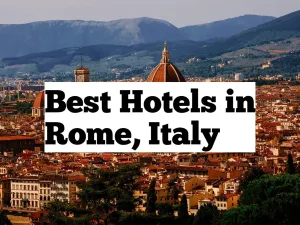
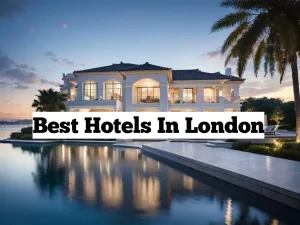
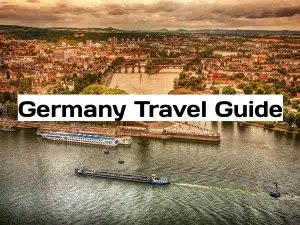
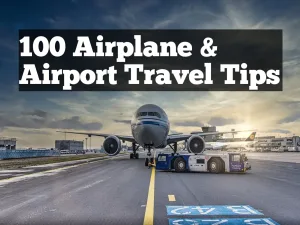
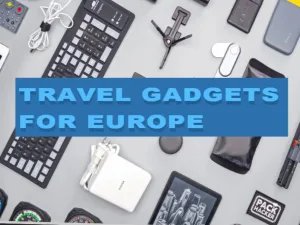
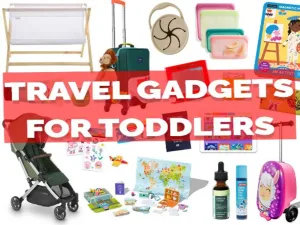
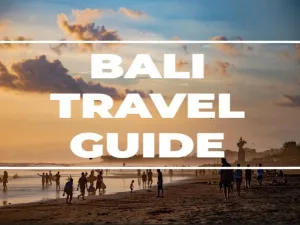

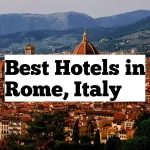

Thanks for sharing. I read many of your blog posts, cool, your blog is very good.